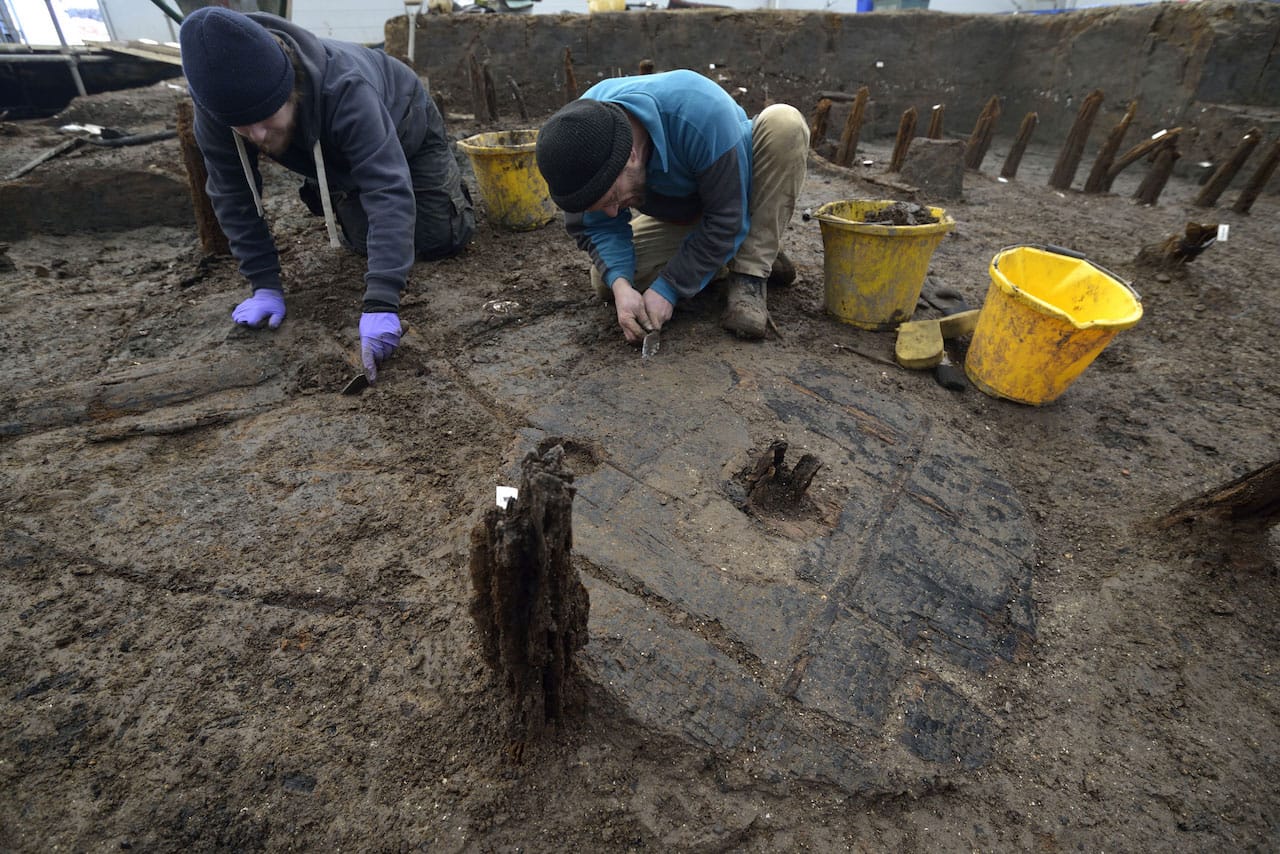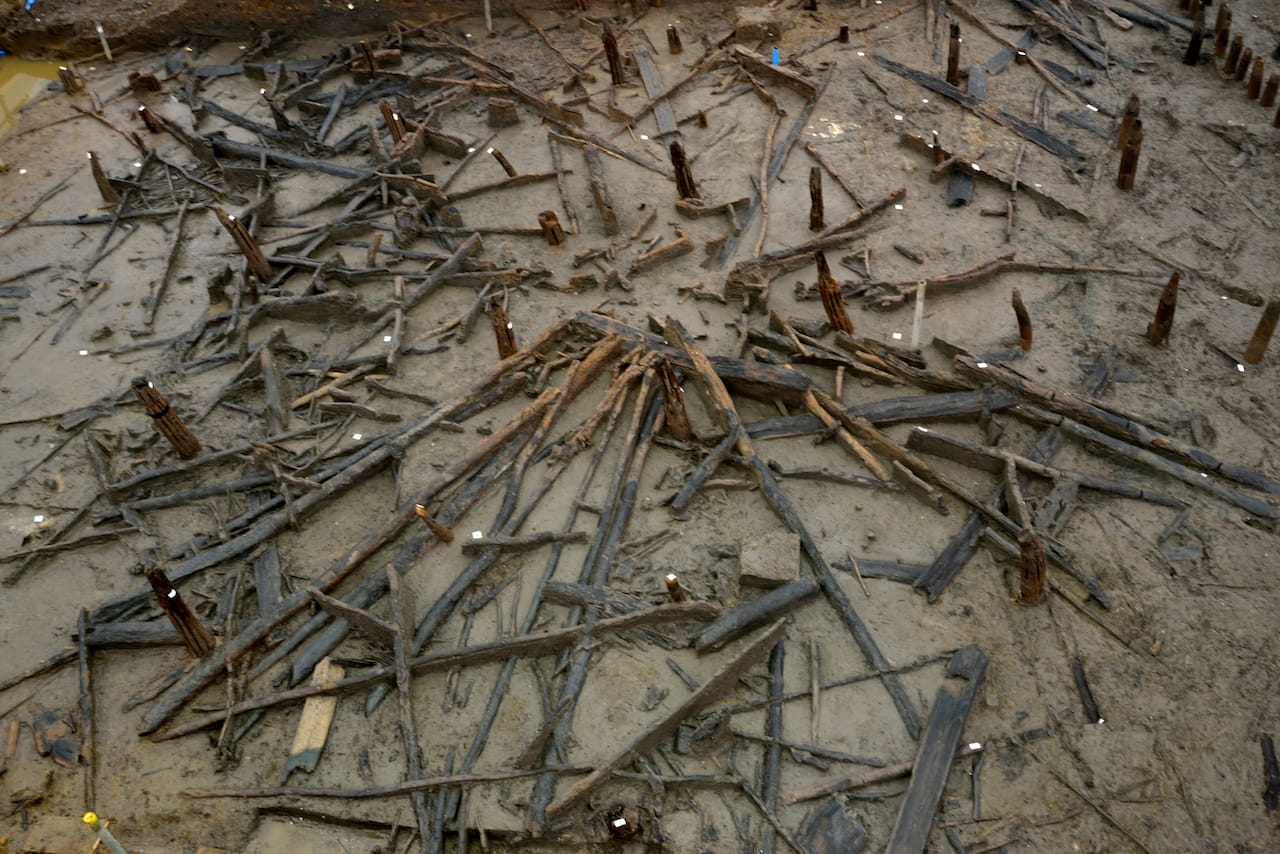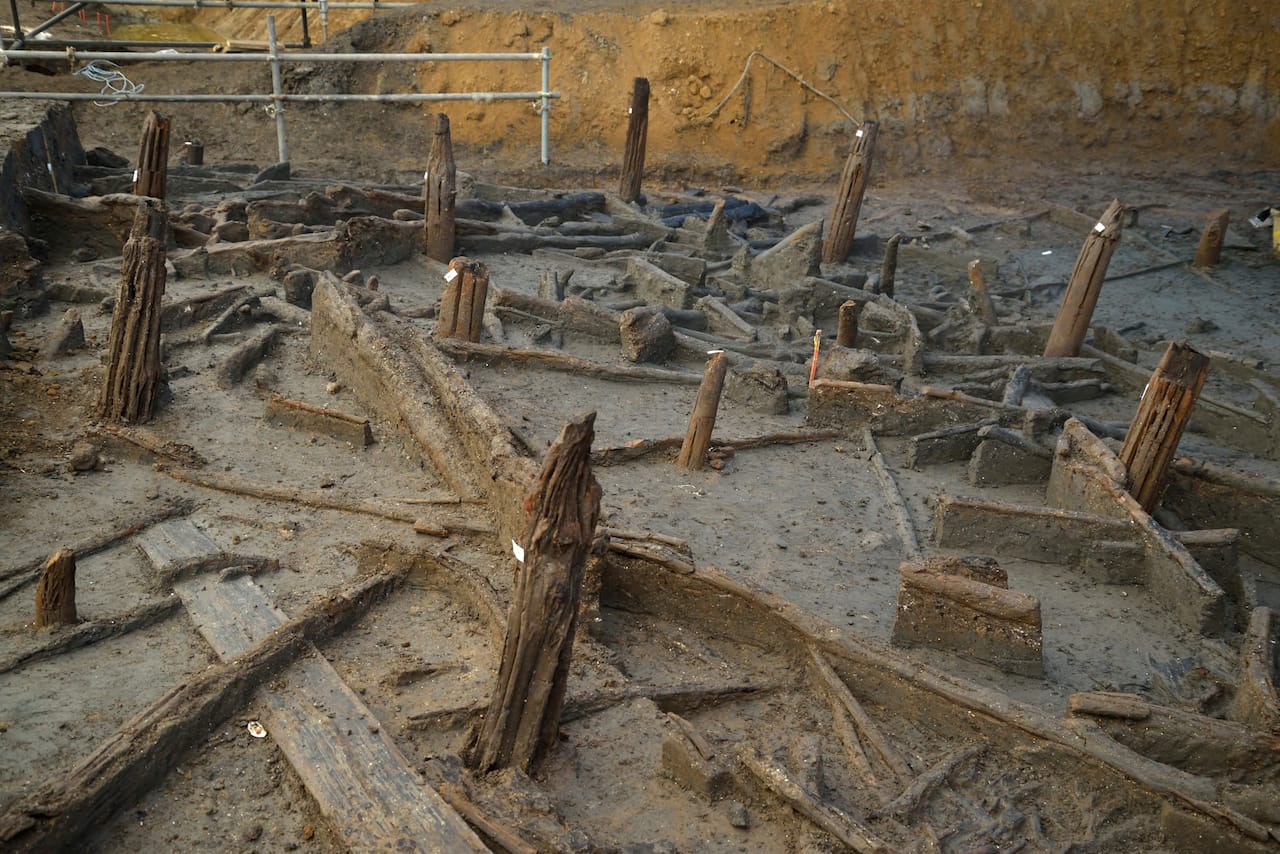Intact Bronze Age Wheel Turns Up in Britain
Archaeologists with the University of Cambridge have uncovered the largest and most complete example of a Bronze Age wheel, the earliest of its kind in Britain.
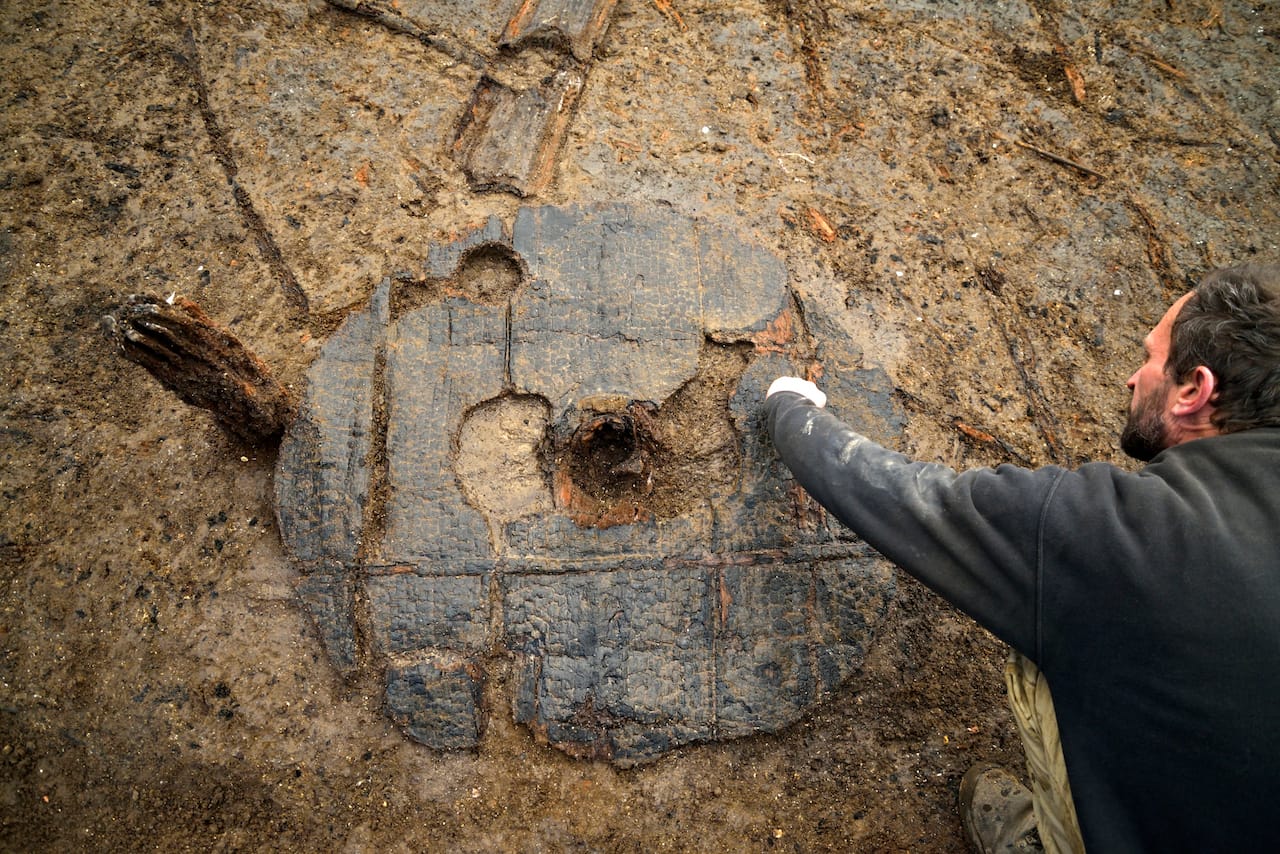
Archaeologists with the University of Cambridge have uncovered the largest and most complete example of a Bronze Age wheel, the earliest of its kind in Britain. Around 3,000 years old and measuring one meter in diameter (~40 inches), the wooden wheel emerged during excavations at Must Farm, a Bronze Age settlement near Peterborough, which lies about 75 miles north of London. Nicknamed “Peterborough’s Pompeii,” the site was once had a thriving population until a fire decimated their dwellings, causing the structures to collapse into a river. The wheel, as Must Farm representative Selina Davenport told Hyperallergic, was likely once attached to a cart, and its current preserved state is pretty extraordinary.
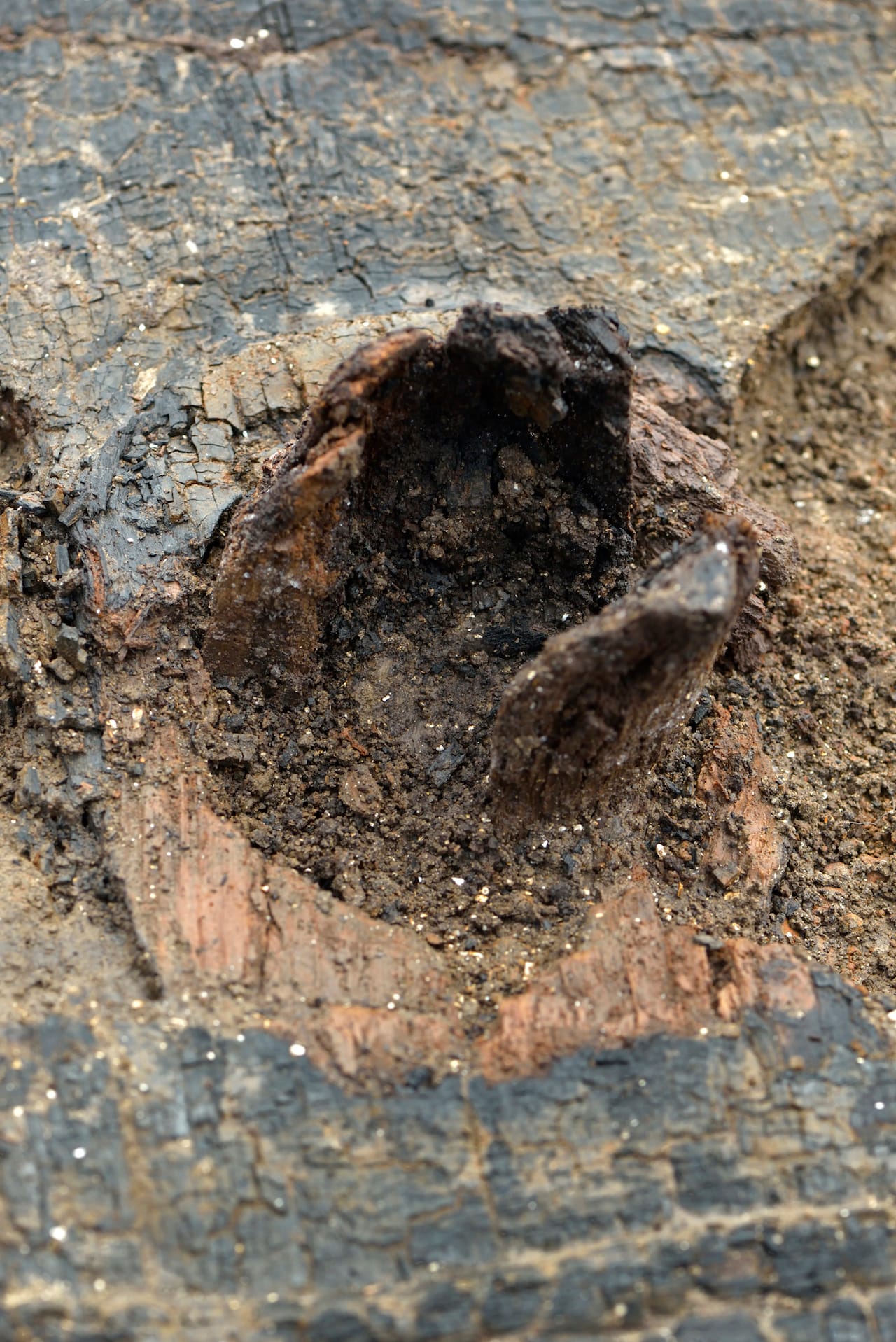
“Normally wooden artifacts DON’T survive,” Davenport said. “They normally rot away completely. Our wooden artifacts are surviving because in the past, water has infiltrated the wood at a cellular level, then the type of sediment surrounding the items, and the blanket of peat — which grew over the site, protecting it and keeping the site wet. This also creates an anaerobic environment so little decomposition happens without oxygen.”
According to the Cambridge Archaeological Unit, the discovery introduces challenges to our current understanding of Late Bronze Age technology and expands previous thought concerning the level of sophistication of ancient inhabitants. Described as a tripartite structure, the wheel is constructed with three wooden boards attached by two horizontal bracers secured with a dovetail joint. Its axle is even still intact after all this time; carved from oak, it suggests that the wheel’s engineers were also making aesthetic choices. Archaeologists think the crescent-shaped markings etched on either side of it may also have helped reduce the wheel’s overall weight.
Archaeologists have previously found similar wheels in the UK, but none as complete as this latest find. The Flag Fen wheel actually predates Must Farm’s wheel by a couple centuries, but it is incomplete and measures about half a foot less in diameter. A fragment of another wooden wheel, dating to the Late Bronze Age, was uncovered near Cottenham in Cambridgeshire. Looking at the entire European continent, the earliest wheels date to at least 2,500 BCE, according to the Must Farm team.
The site has yielded many other discoveries that offer a glimpse into domestic life thousands of years ago, including extremely well preserved large circular wooden houses that balanced on stilts, textiles made of plant fibers, rare small bowls, and jars with their foodstuffs still inside — although probably well past their expiration dates. After undergoing further analysis and conservation, the objects will eventually end up on display at the Peterborough Museum Flag Fen and other local venues.
